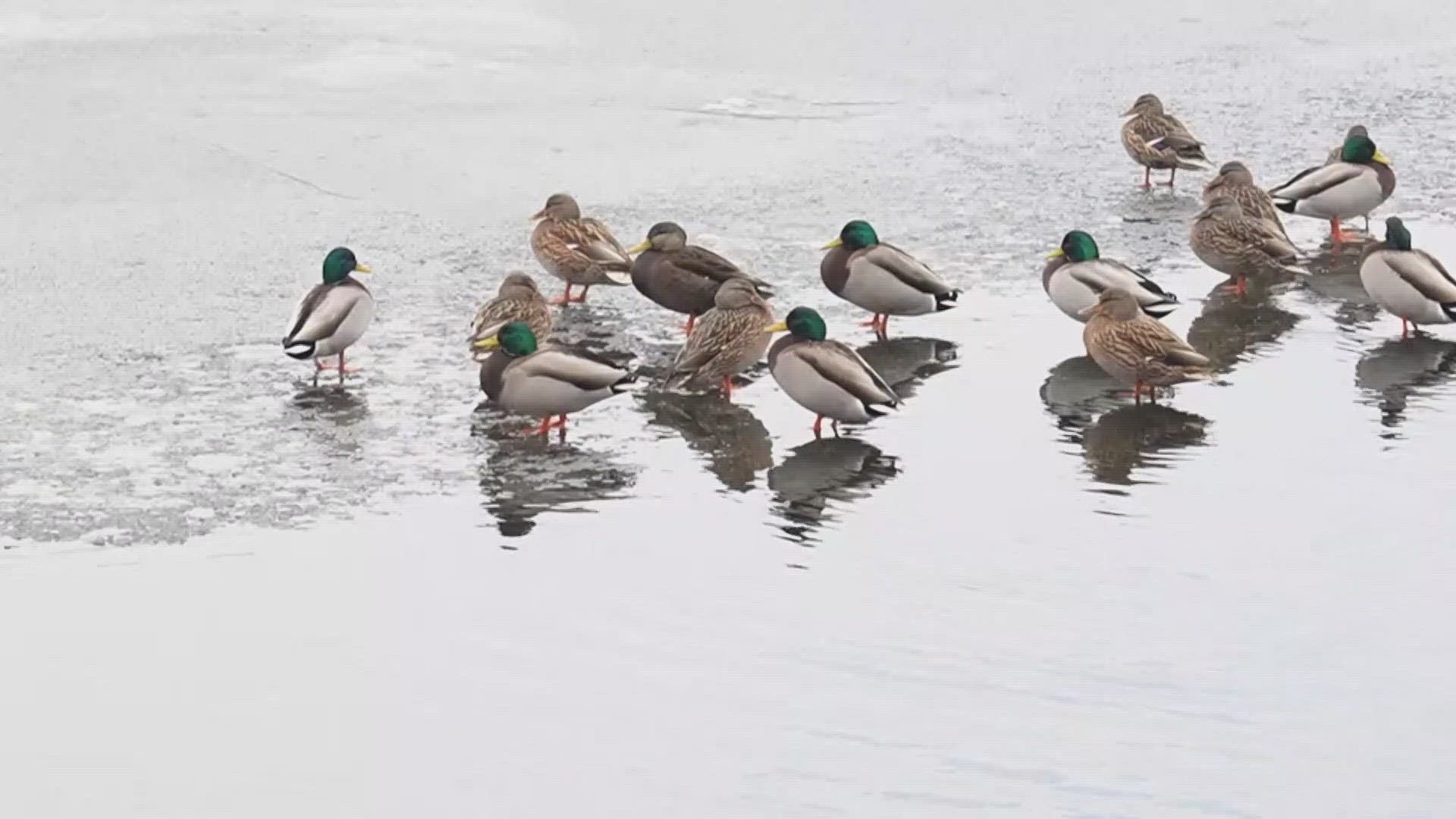NORWAY, Maine — Jerry Ellingwood of Norway felt prepared for the expected snowfall this weekend.
His plow was already fitted to his truck when he told NEWS CENTER Maine he planned to clear out his driveway and a couple of friends as soon as the snow arrived.
However, he remained concerned about other Mainers—particularly young ones—whose snowmobile seasons have been delayed this winter.
“I’m afraid that when they see snow on the lake, they’re just gonna assume it’s safe because the snow is there and it's only paper thin,” he explained. "That was open water three days ago," he said as he pointed to Lake Pennesseewassee across the street from his home.
Cold weather had rolled in that week, forming a fragile layer of ice across many of Maine’s lakes and ponds. Pennesseewassee’s frozen surface was barely thick enough to support the weight of a raft of ducks Thursday afternoon.
Ellingwood pondered, if schools were in session on Monday, some kids would barely be able to contain themselves until they got home. Many of their parents would still be at work and, he posed, eager to make the most of fleeting daylight, the child might grab the key to the family snowmobile and tear off onto a lake or pond; lulled into a false sense of safety because the ice would then be concealed by a blanket of snow.
Maine Game Warden Emerson Duplissie-Cyr trains for water rescues but said he'd prefer to stay dry this weekend.
This early in the freeze, he explained, not only was the snow cover deceptive, but new ice is typically at its most unstable.
“Early season ice is never the same in two spots,” Duplissie-Cyr said. “Definitely, the edges will have some spots where it’s thin, and then you might get out in the center and you think you’re safe; but there could be a spring underneath and it’s causing that ice to be super thin.”
He said a snowmobiler needed five-to-six inches of ice, at an absolute minimum, to cross unscathed—though he preferred more.
As wardens do each winter, he encouraged snowmobilers, ice fishermen, and other lake-bound visitors to bring safety measures like a life jacket and ice picks—the latter can be bought for less than $10 at major retailers and can be hung around the shoulders in case of a breakthrough.

